I think ciabattas have been my kryptonite LOL. Mostly the problem has been dough sticking to the couche. I now have a 100% flax linen couche. I used it once previously after seasoning it by rubbing flour into it and then baking baguettes and there was no sticking. With that experience it was time to bake ciabattas again. Using the same recipe but trying out Alan’s shaping as per his youtube video. I needed a bit more flour on the counter but other than that the shaping went well. Oh I did change a couple of things, no IDY was used and I decided to use a 76% hydration starter to match the hydration of the dough. I should have stretched the dough more during transfer from the couche to the peel.
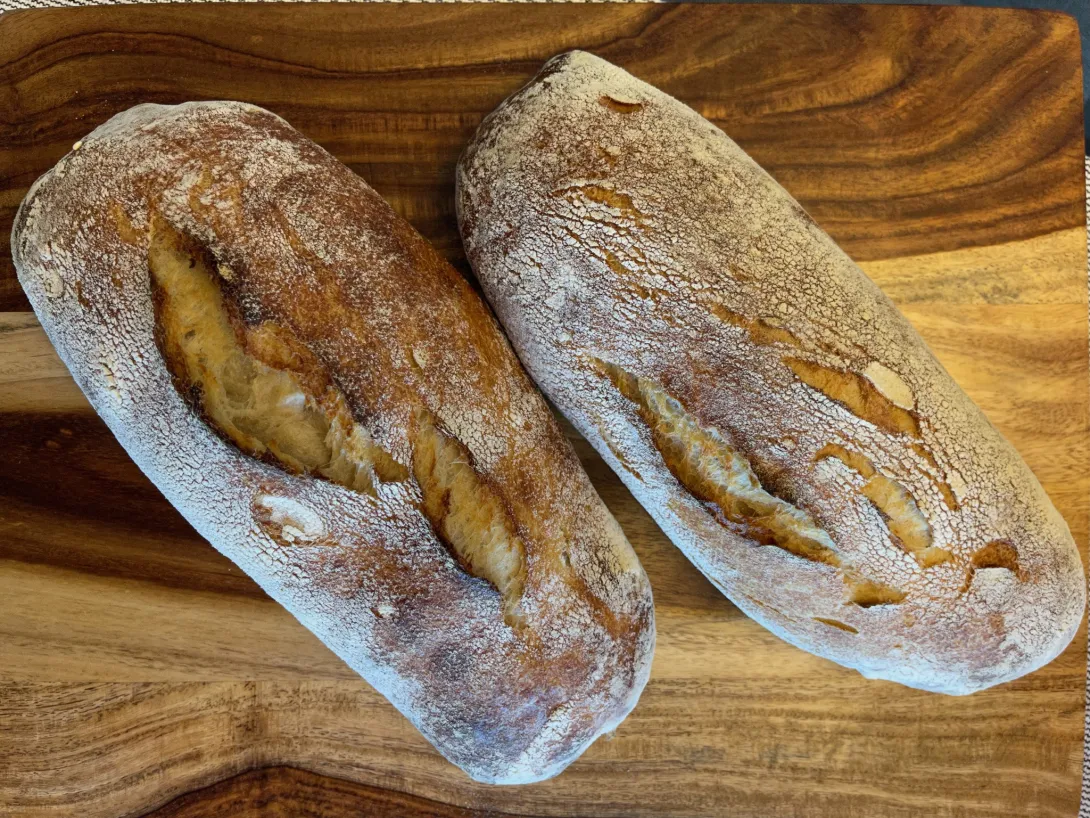
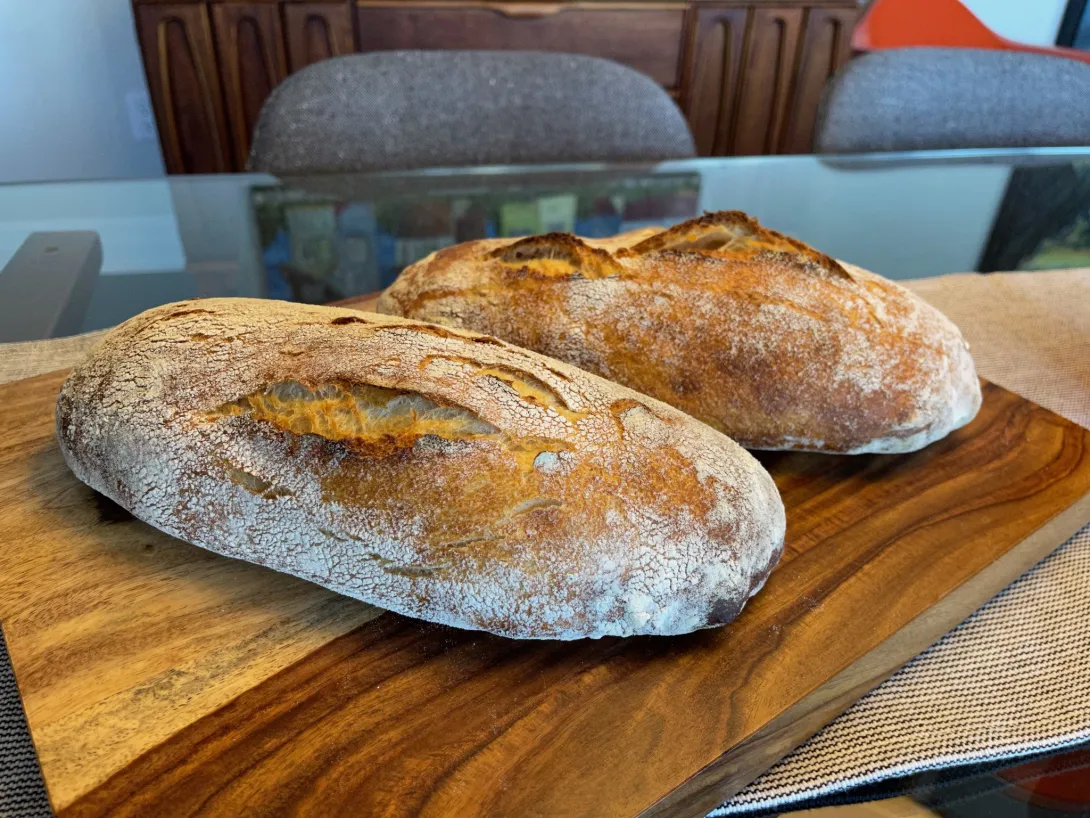
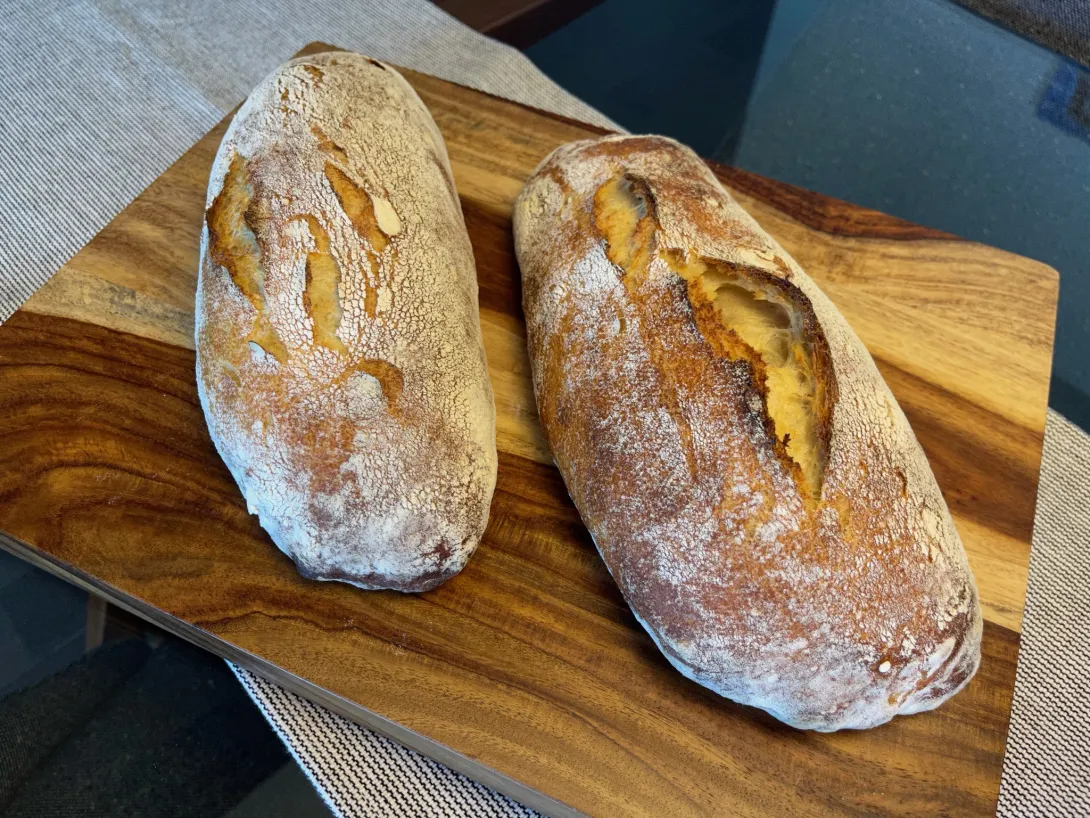
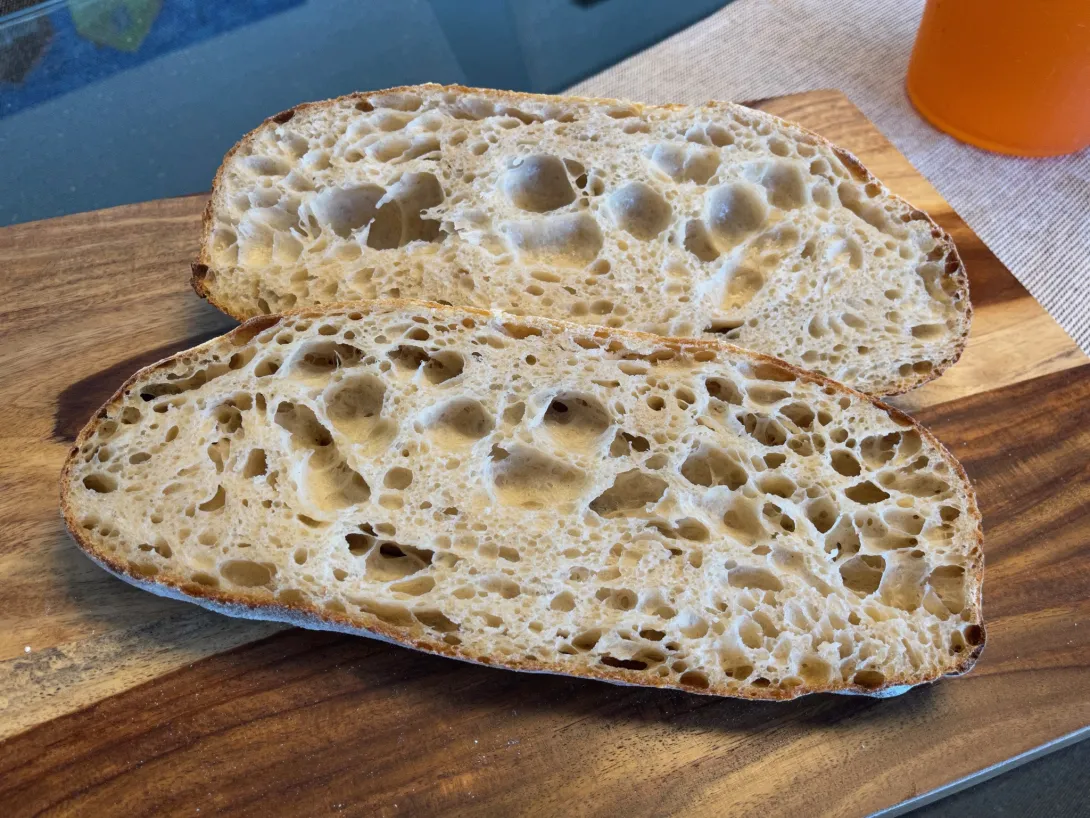
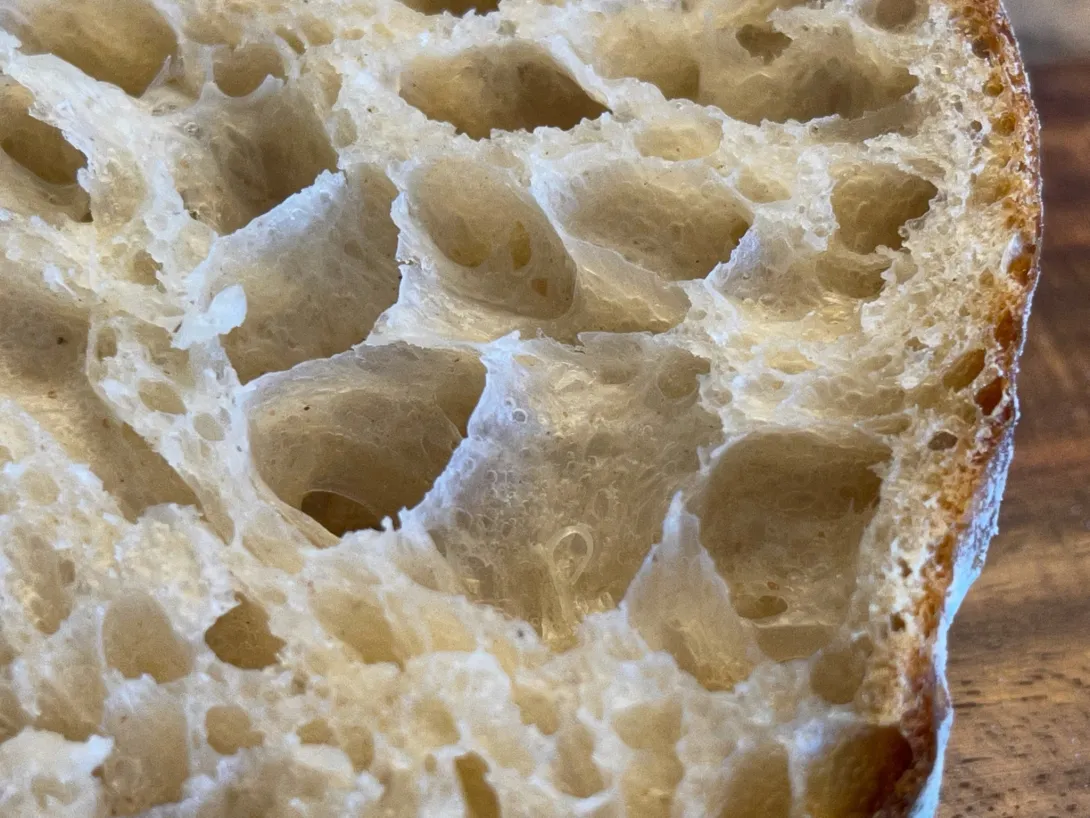
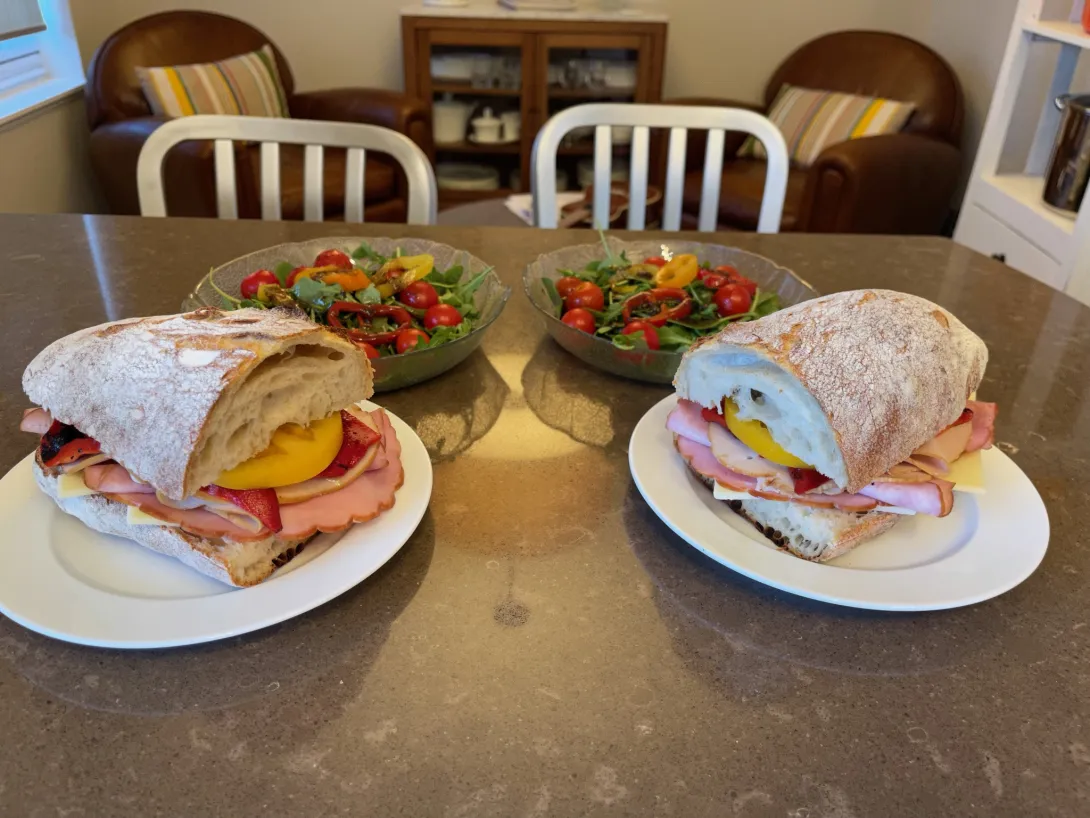
- Benito's Blog
- Log in or register to post comments
…and have frankly given up on the couche except for baguettes, epis, etc.. When the dough is ready to divide, I just flour the island counter, divide and cover with a tea towel until I load it onto the peel. The flip and stretch move is tricky enough without having to coax fabric from the ciabatta glop. I’ve also been using a sourdough levain, poolish AND ADY at mix time. My 50% semola ciabatta is getting many nice reviews from friends. It’s become our preferred sandwich bread this Summer. Your loaves are looking less wild than mine (which I barely shape) and the sandwiches are gorgeous. Getting to be lunchtime here…
Thanks for your comments. I think the next time I bake ciabattas again I’ll try the no shaping shaping, just to see how that works.
Benny
What’s your formula for this one?
Those Sandwiches are making me hungry 😋
Thank you Ian.
I did an overnight levain build. A short autolyse was done of about 30 mins and 10 g of water was held back to be added with the levain. No commercial yeast was used. Several coil folds were done during bulk and dividing and preshaping was done at 50% aliquot jar rise.
I did Alan’s shaping this time
Final bench proof was done resting in the couche until the dough passed the poke test 1.5 hours in my warm kitchen.
Oven preheated @ 500ºF
Baked with steam 480ºF 15 mins
Then remove steam bake 450ºF 10 mins rotating after 5 mins
Then drop temperature to 420ºF 5 mins then 350ºF until browned.
I will have to give this method a try soon. I like the shaping method.
best regards
Ian
These look fantastic Benny. Time to try something new, thank you
Thank you PJ, I hope you give them a try, the loaf I gave to friends got rave reviews.
Benny
Benny, nice slippers! They look fabulous and the lunch also. That's enough for a week's lunches for me :)
Thank you Gavin, these are my best ciabattas so far and the first that I’d call successful. I gave one of them to a neighbor who reports that it was the best ciabatta that they’ve ever had, which was nice to hear. I’ll try the less is more shaping the next time to see what that might yield in terms of the crumb. Glad I finally have the proper couche now, it will help with these types of the bakes in the future.
Beautiful ciabattas, Benny! Not much more to say than that. Crumb looks fantastic.
I plan to have a go with your formula sometime soon. It's been a while since I tried ciabattas.
Simon
Thank you Simon, I appreciate your comments. This was the most success I’ve had so far with ciabattas so I was very pleased. I hope you try this formula as well, I think it is a keeper, although I’ll probably start playing around a bit with the formula.
Benny
Hi Benny, I've recently made some very nice tasting bread (and pizza) with this formula.
I've had some 'tunneling' issues with the ciabatta though, curious if this is something you've experienced and overcome at any point. It's something I only seem to experience with ciabatta (or other unshaped, unscored loaves) where it balloons wildly during oven spring, tearing the top half of the loaf from the bottom and leaving large gaps inside.
Next time I make this I plan to proof much longer so there's less oven spring, does this sound sensible? Appreciate your thoughts.
Hi Simon, I actually haven’t made any bread with this formula since this original post. I didn’t have tunneling in the crumb when I made it. Did the crumb show other signs of underproofing other than tunnels? Was the rest of the crumb very dense or gummy? If so then yes you might be under proofing and needing a longer proof. A photo of the crumb might help as well.
Benny
Pictures incoming! (I just wish inserting pictures wasn't so fiddly, especially in this tiny text box that doesn't seem to be resizeable while also showing pictures at maximum zoom...)
I've had these issues before with ciabatta, so the first time I made this, I deliberately erred on the side of a 'young' dough (since I thought overproofing/fermenting might be the problem).
On this occasion the dough was shaped by the same method you used.
It wasn't dense or gummy, really. Just denser in places relative to the void.
As you can see, oven spring was quite aggressive.
And the tunneling wasn't too bad on this loaf, but you can see the way the gluten is being stretched past breaking point leaving excessive gaps.
Here you can see how these holes form an artificial layer, not really part of the crumb structure.
I also made pizza using the other half of the dough, immediately after the ciabatta was done baking (so just 30min extra proof, in a fairly cool kitchen). And it came out nicely.
The other time I made this, I let the dough develop a normal amount, not pushing too much in either direction.
I also experimented with no shaping, just dividing.
The tunneling here was pretty severe.
Again I made pizza with the other half, again it was very good.
Anyway, I was very happy with how the bread tasted, the texture of the crumb, the crust, etc. It had a nice mild acidity which works well as a ciabatta dough. Definitely a recipe I will return to. Just need to figure out this one issue.
To assess the proofing/fermentation ignore the big holes first. What is the crumb like, are the alveoli in the crumb tiny and tight then more likely to be underfermented. Is the crumb overall actually pretty nice and not tight then not underfermented. Then the large hole characteristics next. Are there large tunnels through the bread and not necessarily immediately under the crust? This along with the tight crumb equals underfermented. Are the large holes immediately under the crust? Do these large holes show in them signs of gluten breakdown with thin broken gluten strands? Then this points towards overfermented. Then look at the profile of the loaf, decent oven spring or excessive oven spring is more associated with under proofing whereas flat profile is more associated with overproofing.
So looking away from the big holes, the crumb is tight with tiny alveoli and appears to be dense in the first ciabatta. Then that one also has the tunnels. The profile of the loaf also is not flat, it is quite tall. So that first ciabatta appears to be underfermented to me.
Now the last ciabatta I believe shows signs of overfermentation. The profile of the loaf is rather flatter with flattened shoulders. Although it is hard to see the crumb doesn’t appear to be dense and the alveoli in the crumb look to be good sized. Then in the large holes, you can see broken gluten strands, this shows that the proteolytic enzymes had their way with the gluten and weakened them as the dough over fermented as it became more acidic.
Appreciate the response. I'll bear this in mind next time I bake. Thanks!